Trees with red berries will add vibrancy to your garden in the bleakest months, and provide vital food for wildlife. Discover the best varieties to plant
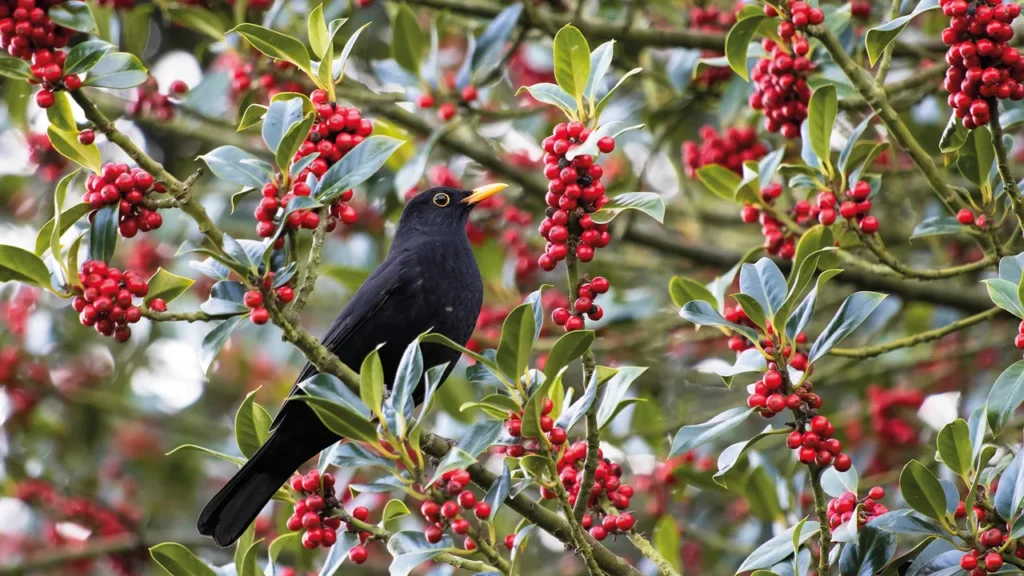
trees with red berries offer a delightful spectacle during the fall and winter seasons, injecting a burst of joyful color amidst the fading hues of nature. Yet, their charm extends beyond these colder months. Certain varieties grace the summer landscape with their presence, while many boast stunning blossoms in the spring. With such versatility, there exists a tree with red berries to complement any garden, enriching your outdoor space with seasonal allure. As Pete Smith, urban forestry program manager at Arbor Day Foundation, aptly puts it, “Trees with red berries are not only decorative but also provide visual interest, particularly in the winter. Moreover, many of these berries are edible and serve as a vital food source for wildlife.” Elevate your backyard aesthetics and ecological impact by choosing the perfect tree with red berries for your garden.
Trees With Red Berries
Red berry trees stand out as favorites among gardeners, offering not only aesthetic appeal but also practical benefits. Several varieties are ideal for forming evergreen hedges, making them excellent choices for enhancing privacy and screening in your backyard oasis.
When selecting the perfect red berry trees for your garden, it’s crucial to consider your local climate. Familiarizing yourself with your USDA plant hardiness zone ensures that you choose species that will thrive in your specific environment.
Additionally, take into account factors such as soil type, sunlight exposure, and maintenance requirements. Ensuring compatibility with these elements sets the stage for a healthy and thriving tree.
Be mindful of the tree’s potential size and growth rate to prevent it from overpowering your yard. Proper planting techniques are essential for success, so take the time to learn how to plant your chosen tree correctly.
Moreover, consider whether you desire red berries for culinary purposes or solely for ornamental value. Susannah Shmurak, founder of HealthyGreenSavvy.com, emphasizes the allure of trees with edible or medicinal fruits, highlighting their nutritional benefits.
While many red berries offer a plethora of vitamins and antioxidants, it’s essential to exercise caution. Some varieties may be toxic or require cooking before consumption. Always verify the safety of berries before incorporating them into your diet.
Choose wisely, and let your red berry tree not only beautify your garden but also provide nourishment and delight throughout the seasons.
1. Hawthorn
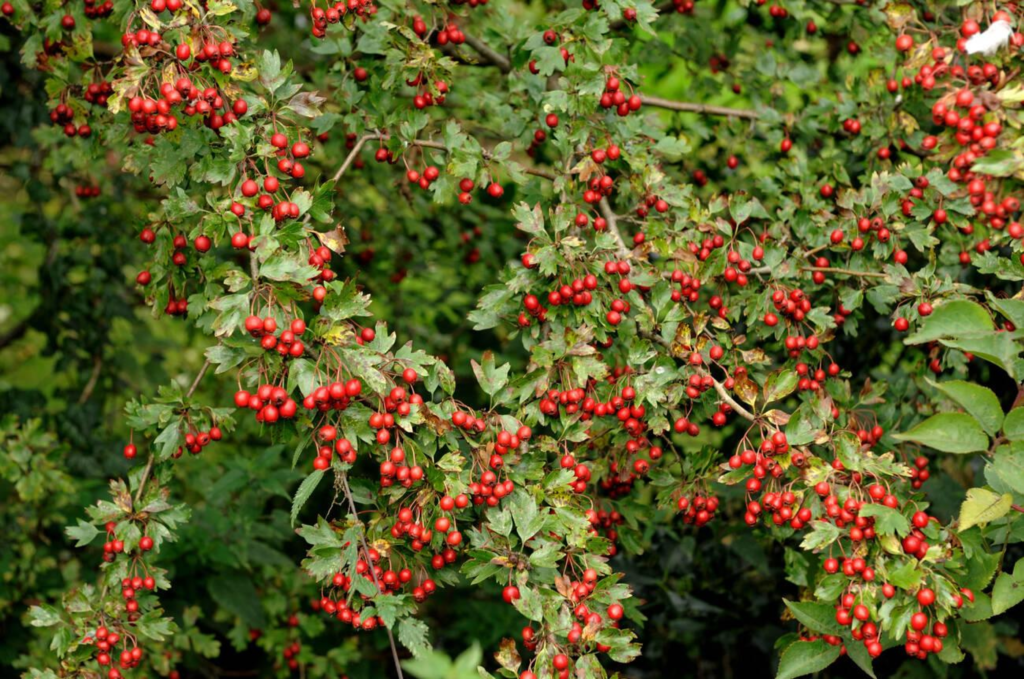
The hawthorn tree, scientifically known as Crataegus monogyna, is a familiar sight in hedgerows and a prized addition to gardens. Its vibrant red berries, known as ‘haws’, persist through the fall and into the winter, lending a touch of color and vitality to the landscape.
According to Smith, the hawthorn tree is not only visually appealing but also attracts a range of wildlife, including birds, squirrels, rabbits, and deer, all drawn to its bountiful berries.
Shmurak highlights the medicinal value of hawthorn berries, particularly for heart health, making them a valuable addition to your culinary and wellness repertoire. While consuming haws, ensure to cook them first to unlock their nutritional benefits fully.
For culinary enthusiasts, hawthorn berries lend themselves well to various recipes, from sauces to jellies and even wine, offering a versatile ingredient for creative cooking endeavors.
Fernandes at Housegrail recommends the ‘Winter King’ green hawthorn variety, prized for its striking display of red berries against bare branches in the mid to late spring, adding a touch of elegance to any yard.
With a wide adaptability range from zones 5 to 9 and tolerance to various soil types, hawthorn trees thrive best in full sun, reaching heights between 15 to 30 feet, making them an excellent choice for gardens seeking both beauty and functionality.
2. Holly
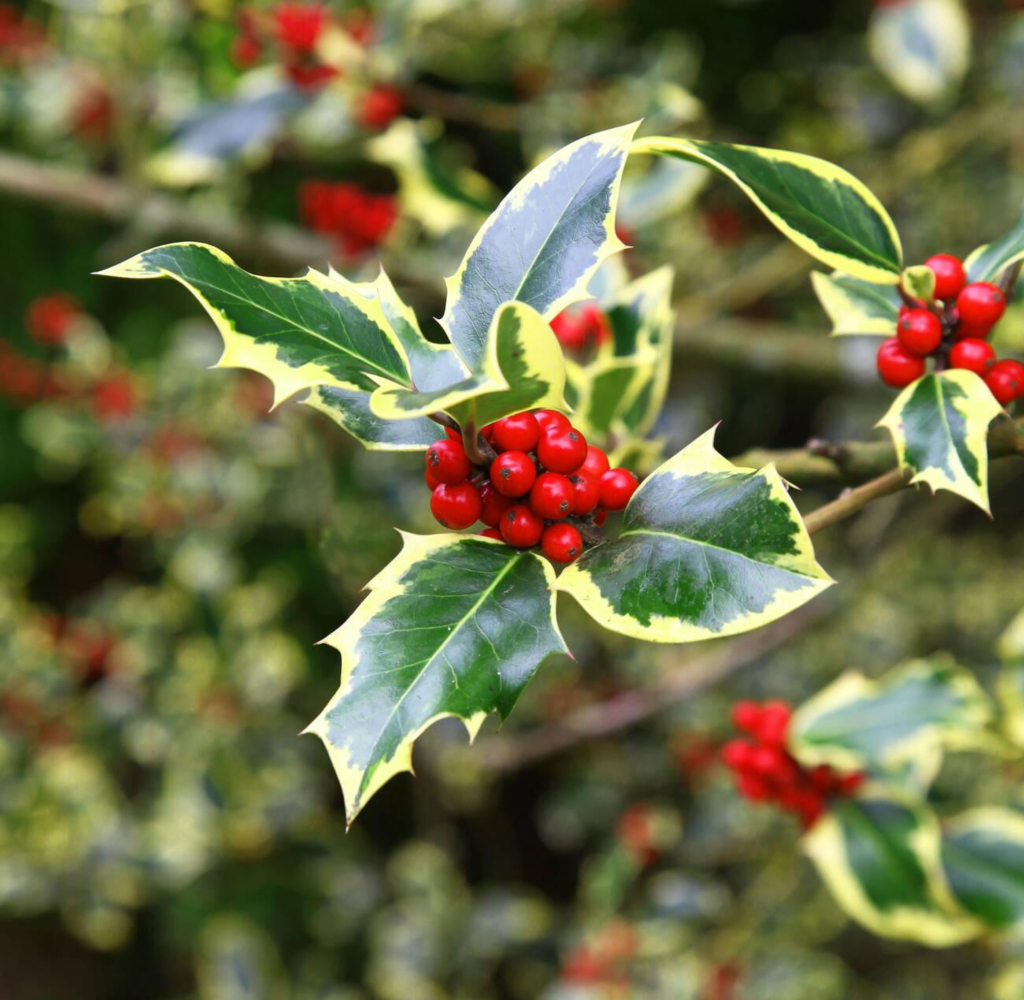
Beyond its association with Christmas, holly emerges as a stellar choice among trees adorned with red berries for your winter garden. Smith advocates for the American holly, scientifically known as Ilex opaca, renowned for its glossy green foliage that persists throughout the winter alongside vibrant red berries frequently utilized in holiday wreaths.
Thriving in zones 5-9 and adaptable to partial shade and various soil types, holly trees can soar to heights of up to 50 feet. However, achieving berry production requires planting multiple trees as they do not self-pollinate.
According to Arborist Mark Russell, the English holly, or – Ilex aquifolium – , stands out as one of the premier options for privacy. While other popular choices like arborvitae and Leyland cypress may have vulnerabilities to fungus, Russell champions the resilience of English holly cultivars, praising their prolific red berries and effectiveness as privacy screens.
Consider integrating holly trees into your landscape not only for their aesthetic appeal but also for their practical benefits in enhancing privacy and adding seasonal charm to your outdoor space.
3. Mountain Ash – Rowanberry
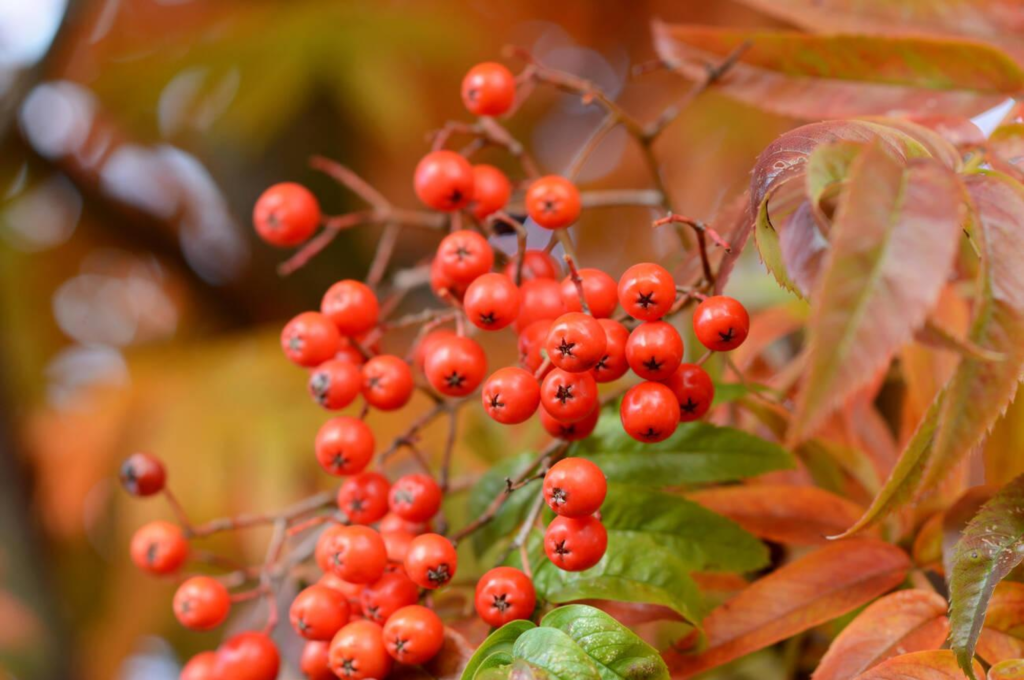
The mountain ash, scientifically referred to as Sorbus aucuparia, stands out as a captivating addition to any garden landscape. With its vibrant display of bright red rowanberries from late summer to early winter, accompanied by delicate frothy white blossoms in the spring, this tree offers year-round visual delight. Furthermore, its foliage transforms into a stunning shade of orange during the fall, earning it recognition as one of the finest trees for autumnal hues.
According to Shmurak, the mountain ash tree’s abundant fruit serves as a vital food source for birds during the winter months, while also presenting an opportunity for determined foragers to utilize them in various culinary endeavors. Despite their slightly bitter taste, rowanberries boast high levels of vitamin C and possess anti-inflammatory properties, making them a valuable addition to homemade recipes.
Shmurak suggests transforming rowanberries into jelly, vinegar, wine, or even the beloved Turkish delight, showcasing the versatility of this fruit in culinary creations.
Ideal for regions within zones 3-6, mountain ash trees thrive in well-drained soil and partial shade, though they may struggle in areas with extreme heat and humidity. With the potential to reach heights of around 30 feet, these hardy trees offer not only aesthetic appeal but also practical benefits for both wildlife and culinary enthusiasts alike.
4. Cherry Tree
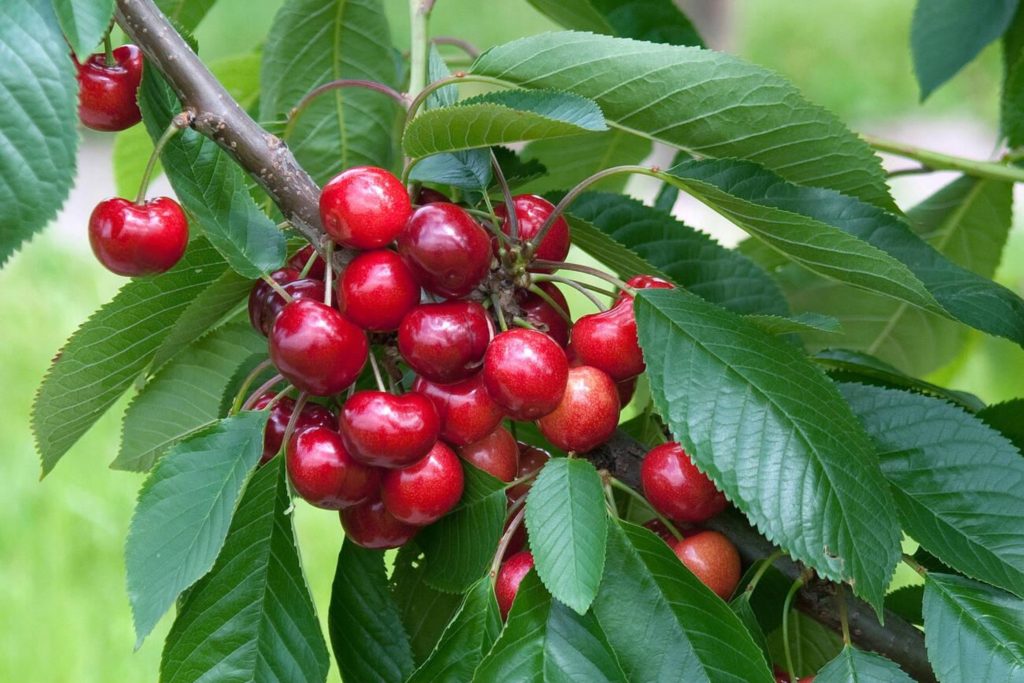
Cherry trees hold a special place in the heart of Barbosa Fernandes, who extols their virtues as one of the most beloved trees boasting red “berries”. Not only do these trees bear delicious fruits, but they also adorn themselves with stunning blossoms, heralding the arrival of spring.
Unlike some of their counterparts, cherry trees bear fruit during the summer months. However, their magnificent blossoms serve as early indicators of the impending spring season, adding a touch of beauty and anticipation to the end of winter.
The array of cherry tree varieties available caters to a wide range of climates, with options suitable for zones 3-9. While sweet varieties thrive in full sun, acidic cooking cherries can tolerate partial shade. ‘Sweetheart’, for instance, stands out as a late-season variety boasting bright red cherries and self-fertility.
With cherry trees available in various sizes, including dwarf varieties perfect for container gardening, even those with limited space can enjoy the beauty and bounty of these trees on their patio.
Furthermore, Barbosa Fernandes highlights the opportunity to experience the splendor of cherry blossoms firsthand at festivals across the United States. These events not only offer a visual feast but also provide the chance to indulge in the delectable cherries later in the year, ensuring that the joy of cherry trees can be savored by all.
5. Chokecherry
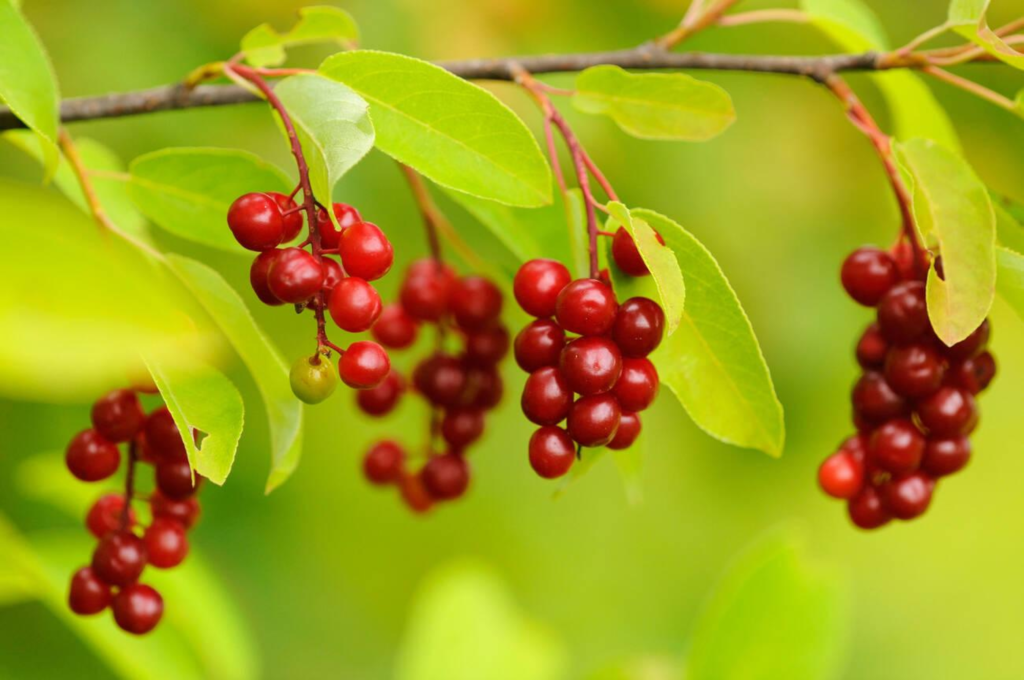
Native to North America, the chokecherry tree, scientifically known as Prunus virginiana, offers a wealth of culinary and aesthetic delights. According to Smith, this smaller tree bears dark red fleshy fruits that serve as the foundation for jams, jellies, syrups, and wines, showcasing its versatility in the kitchen.
Rich in antioxidants, chokecherries can possess an astringent quality when not fully ripe; however, cultivated varieties often boast a sweeter, cherry-like flavor profile.
In spring and summer, the tree adorns itself with clusters of white flowers, adding a touch of elegance and charm to the garden throughout much of the year.
With a maximum height of up to 30 feet, the chokecherry thrives in zones 2-8, making it suitable for a wide range of climates and environments. Whether appreciated for its culinary potential, ornamental beauty, or ecological value, the chokecherry stands out as a versatile and cherished addition to North American landscapes.
6. Red Chokeberry
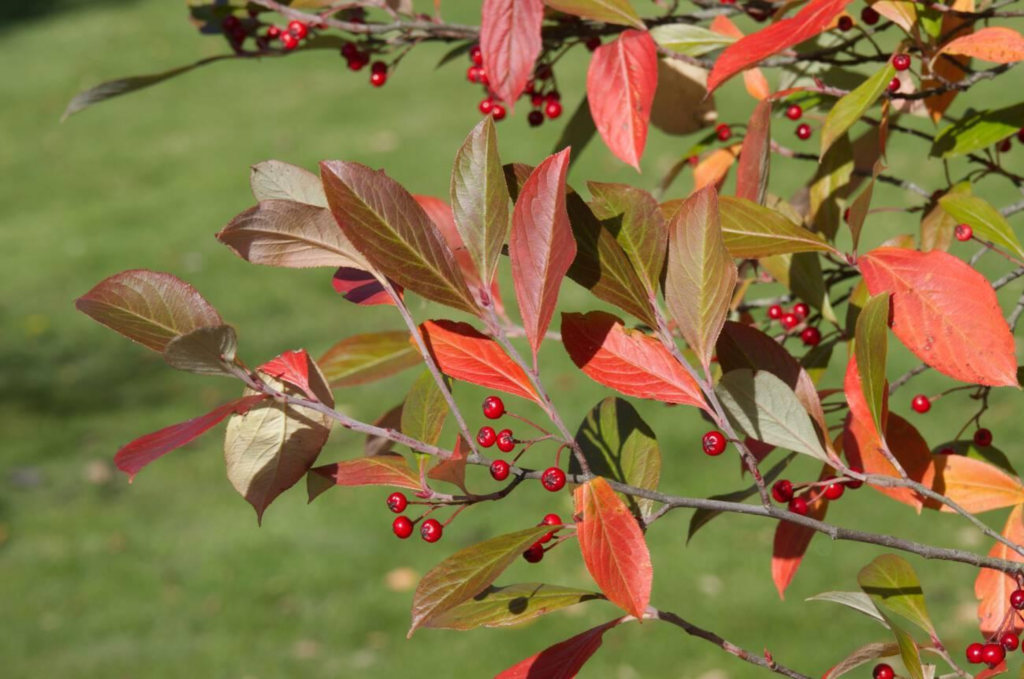
Distinguished from the chokecherry, the chokeberry offers a unique botanical experience, despite sharing a name derived from its effect on the palate.
This upright treelike shrub, technically classified as Aronia arbutifolia, showcases a remarkable shiny ruby hue, setting it apart from its dark blue/purple counterparts. According to Jen Stark, founder of Happy DIY Home, the chokeberry boasts stunning white flowers in spring, transitioning into vibrant red berries throughout the summer months until late fall. Additionally, its foliage undergoes a dazzling transformation, displaying brilliant colors in the autumn, adding to its appeal across multiple seasons.
While the berries themselves are too bitter for raw consumption, they find a niche in desserts and savory dishes, lending a unique flavor profile to culinary creations.
With a modest height ranging between 6.5 to 13 feet and large leaves, the chokeberry proves to be an ideal choice for small gardens, offering both visual allure and culinary potential in a compact package.
7. Mulberry Tree With Red Berries
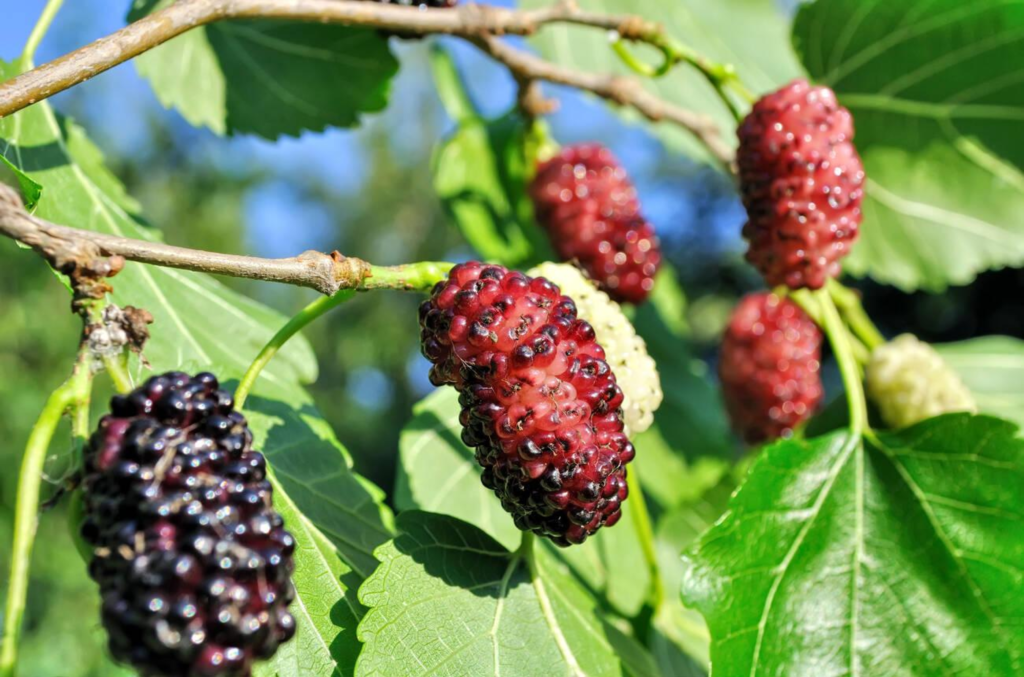
Renowned for their bountiful harvests, red mulberry trees, scientifically known as Morus rubra, stand out as a delightful addition to any garden landscape, as noted by Russell. With an abundance of fruit reminiscent of raspberries or blackberries, these trees offer a delectable treat that is not only incredibly sweet but also plentiful.
Reaching impressive heights of up to 80 feet, red mulberry trees thrive in zones 4-9 and exhibit tolerance to partial shade. However, Russell advises against planting them over driveways or walkways due to the potential for staining caused by the copious amount of berries they produce. For this reason, red mulberry trees may be better suited for backyard settings rather than front yards.
Despite this consideration, the allure of their sweet and abundant fruit makes red mulberry trees a cherished addition to gardens across a wide range of climates and environments.
8. Juneberries
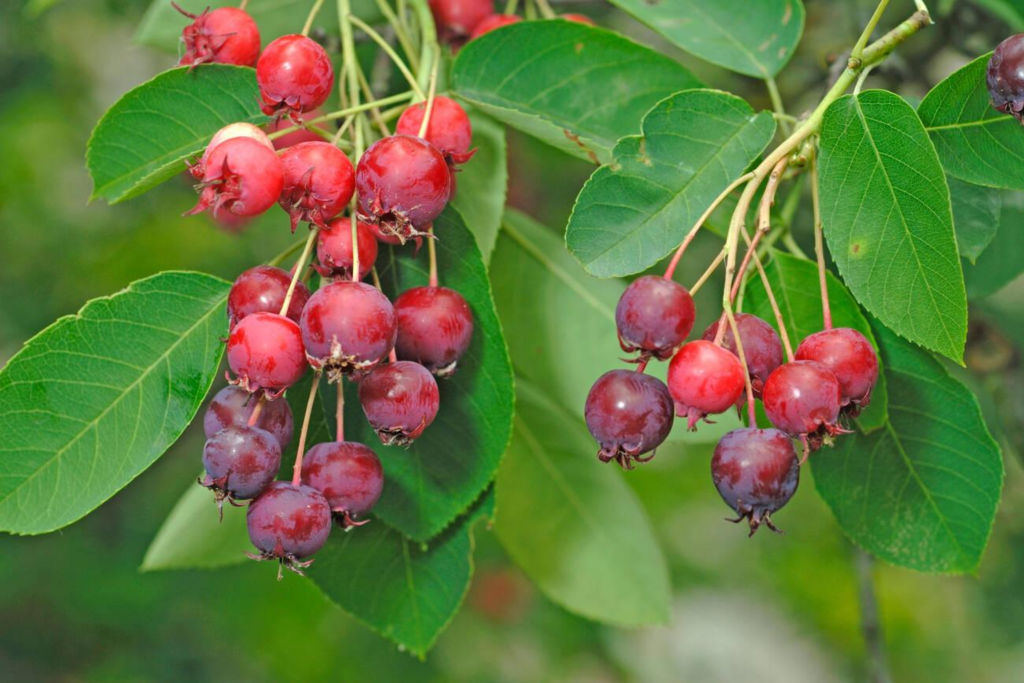
‘Though the ripest berries are a bit on the purply side, my favorite trees with red berries are hands-down juneberries – Amelanchier alnifolia – also known as serviceberry or saskatoon,’ says Shmurak.
‘These delicious blueberry-like fruits grow prolifically in all sorts of conditions, have lovely spring flowers, as well as attractive fall color.’
Juneberries are hardy trees that grow well in zones 2-7, tolerating light shade and damp sites. They typically reach between 15-35ft.
Another benefit of these wonderful trees is that in the spring they produce elegant star-shaped flowers, while in the fall, their foliage turns brilliant red orange.
9. Peruvian Pepper Tree With Red Berries
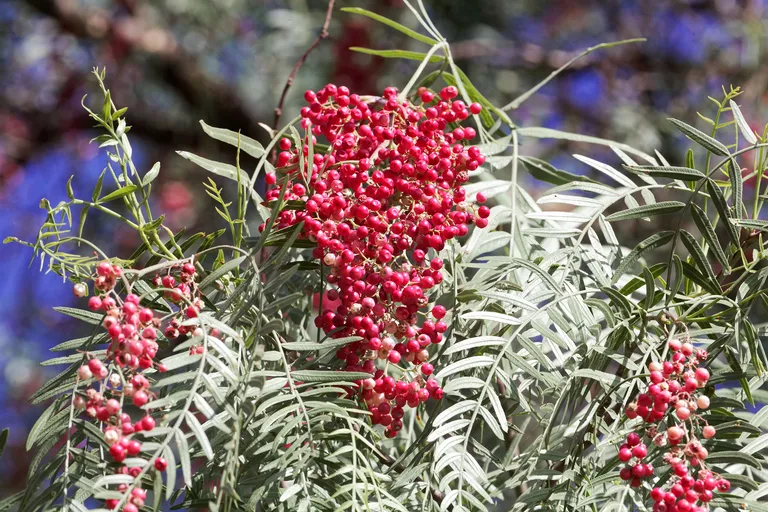
Renowned by various names such as the California pepper tree, false pepper, or the American pepper, the Peruvian pepper tree, scientifically referred to as Schinus molle, offers a unique culinary and aesthetic experience, according to Stark. This evergreen tree produces small red berries with a peppery taste, safe for consumption.
Thriving in arid and hot climates, the Peruvian pepper tree flourishes in zones 8-11, reaching heights of 25-50 feet. Adorned with pretty pinnate fern-like leaves and small white flowers in the spring, this tree adds a touch of elegance to any landscape. Stark further notes that its berry-like drupes of pink or red woody seeds grow in large clusters throughout the year, enhancing its visual appeal.
With its ability to thrive in warm climates and its culinary potential, the Peruvian pepper tree stands as a versatile and attractive addition to gardens in regions conducive to its growth.
10. Yew Tree With Red Berries
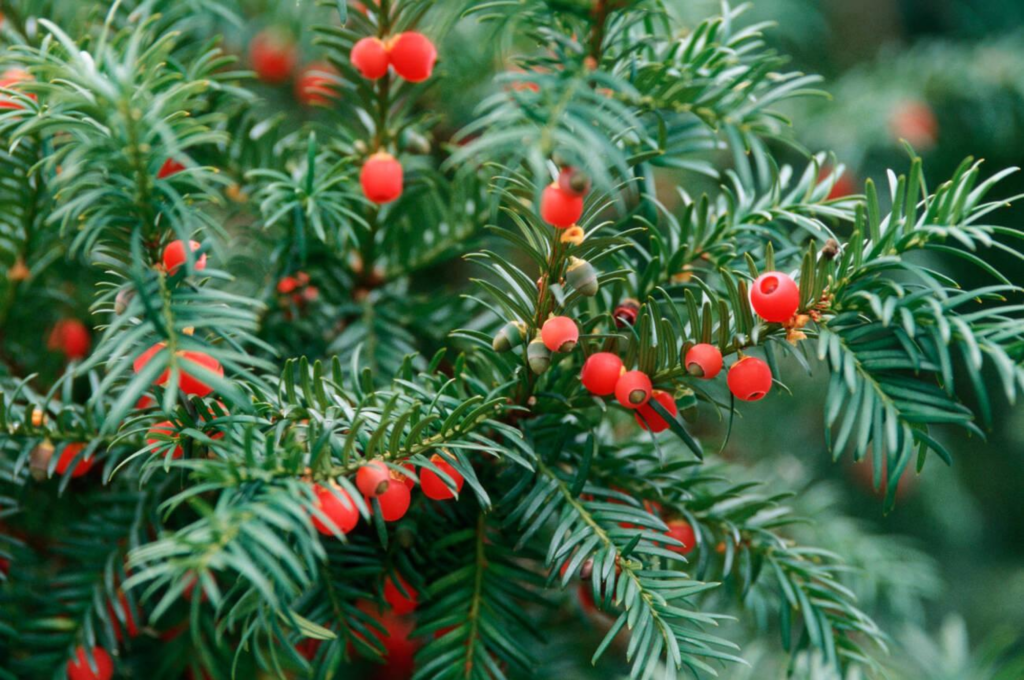
The yew trees with red berries, scientifically known as Taxus baccata, stands tall as a majestic coniferous presence in any garden, adorned with vibrant scarlet berries in the fall complementing its lush green needles. Beyond its ornamental value, the yew boasts an ancient lineage steeped in myth and superstition, with some specimens believed to exceed 3,000 years in age.
As an evergreen, the yew contributes year-round color and screening to the garden landscape, thriving in zones 5-7. While capable of reaching considerable heights, it can be pruned to maintain its shape or fashioned into a hedge, offering versatility in garden design.
However, it’s essential to note that despite its landscaping potential, the yew tree harbors toxicity to humans, rendering it unsuitable for those seeking trees with edible berries. Fortunately, the berries provide a safe and nourishing feast for birds, ensuring that the yew’s bountiful harvest does not go to waste.





